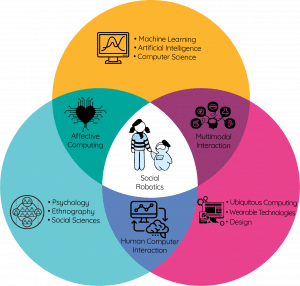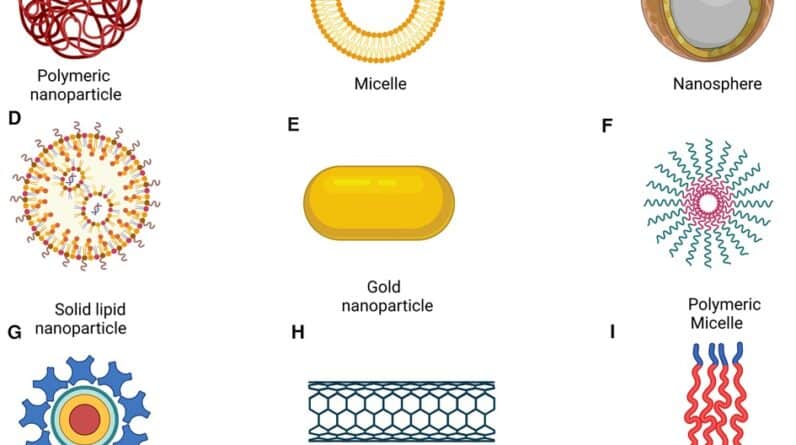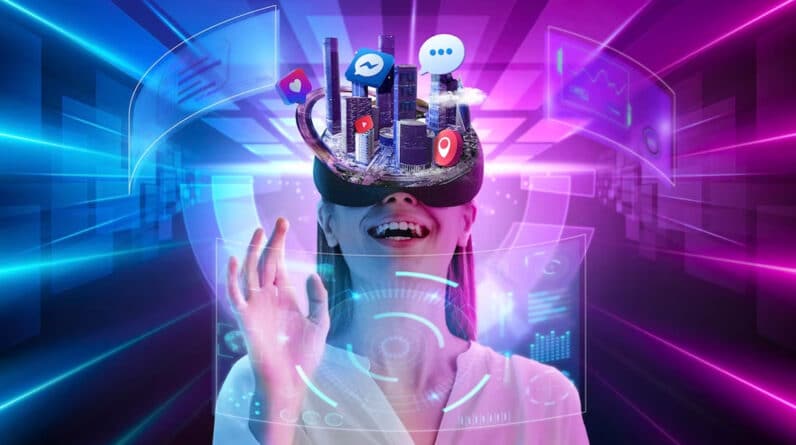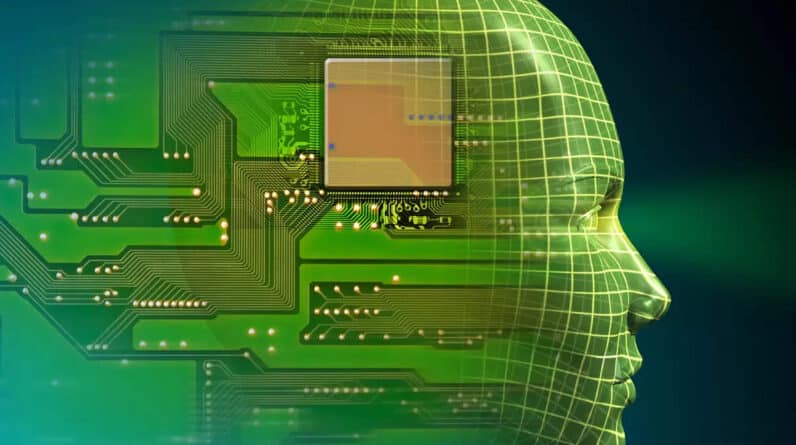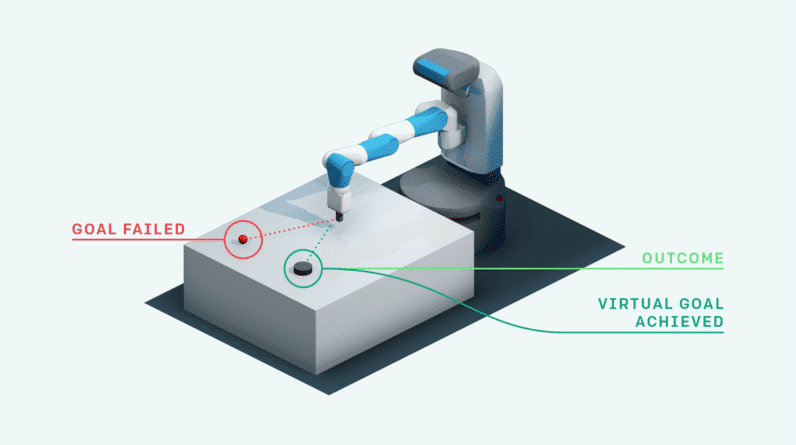In this article, you will discover how the dynamic duo of artificial intelligence (AI) and space exploration are transforming the landscape of scientific research and missions. From analyzing vast amounts of complex data to enhancing navigation systems, AI is revolutionizing the way we explore and understand the vastness of space. Get ready to embark on a journey where cutting-edge technology meets the infinite possibilities of the cosmos.

Improved Data Analysis
Enhancing image processing
With the advancement of AI technology, image processing in space exploration has reached new heights. AI algorithms are now able to analyze and interpret images acquired from spacecrafts and satellites with incredible precision and efficiency. By leveraging machine learning techniques, AI can identify objects, detect changes over time, and even classify and categorize features in the images. This enhanced image processing capability is crucial in studying planetary surfaces, identifying geological formations, and monitoring changes in the environment.
Analyzing large datasets
Space exploration generates vast amounts of data, making it challenging for humans alone to process and analyze this information effectively. AI comes to the rescue by providing advanced data analysis techniques that can handle large datasets with ease. Machine learning algorithms can comb through massive amounts of data, identify patterns, and extract valuable insights. This enables scientists and researchers to understand complex phenomena, uncover hidden relationships, and make data-driven decisions. AI-driven data analysis is transforming space exploration by accelerating scientific discoveries and helping us unlock the mysteries of the universe.
Identifying patterns and anomalies
One of the key strengths of AI in space exploration is its ability to identify patterns and anomalies in data. When analyzing data from distant planets, asteroids, or stars, identifying subtle variations or unusual phenomena can be a daunting task. AI algorithms excel at recognizing patterns that may not be apparent to human analysts. By training AI models on vast datasets and teaching them to spot certain characteristics, scientists can quickly identify anomalies and study them in more detail. This helps in understanding the underlying processes and phenomena in the universe, leading to groundbreaking discoveries.
Enhanced data interpretation
Interpreting complex data in space exploration is a critical task that requires expertise and experience. AI can augment human capabilities by providing advanced data interpretation tools. By employing natural language processing and machine learning algorithms, AI can aid in understanding and extracting meaningful insights from scientific papers, research findings, and historical data. This enables scientists to stay up to date with the latest research, gain new perspectives on existing problems, and make informed decisions in their mission planning and optimization efforts. AI-powered data interpretation is revolutionizing the way we approach and understand space exploration.
Autonomous Spacecraft
Independent decision making
AI has paved the way for autonomous spacecraft capable of making independent decisions in real-time. Traditionally, spacecraft operations were heavily reliant on human intervention and remote control. However, with the advancements in AI, spacecraft can now analyze their surroundings, evaluate the best course of action, and execute tasks without constant human oversight. This autonomy enables spacecraft to respond swiftly to unforeseen events, adapt their operations based on changing conditions, and carry out their missions more efficiently and effectively.
Real-time navigation and control
Navigation and control are crucial aspects of space missions, and AI plays a significant role in enhancing these capabilities. AI algorithms can process sensor data, such as images, signals, and telemetry, in real-time to determine the spacecraft’s position, orientation, and velocity. This information is used to ensure accurate navigation, precise maneuvering, and optimal trajectory following. With AI-enabled real-time navigation and control, spacecraft can autonomously navigate complex space environments, avoid obstacles, and reach their destinations with unprecedented accuracy.
Course correction and trajectory optimization
Spacecraft often encounter unforeseen factors that can impact their planned trajectory. AI algorithms can monitor various inputs, such as gravitational forces, solar wind, and atmospheric conditions, and make real-time recommendations for course corrections and trajectory optimizations. This allows spacecraft to adapt to changing conditions, avoid potential hazards, and ensure they are on the most efficient and optimal path towards their destination. The ability of AI to continuously monitor and adjust trajectory parameters significantly improves mission success rates and maximizes the utilization of available resources.
Automated science operations
AI enables spacecraft to conduct automated science operations, reducing the need for constant human intervention. By leveraging machine learning and intelligent algorithms, spacecraft can analyze scientific data in real-time, identify interesting phenomena, and prioritize scientific observations based on predefined objectives. This automation not only increases the efficiency of scientific data collection but also reduces the workload on human operators. AI-driven automated science operations empower spacecraft to make important scientific discoveries independently, contributing to our understanding of the universe and driving future research endeavors.

Robotic Exploration
Efficient resource utilization
In robotic exploration missions, AI plays a critical role in optimizing resource utilization. Whether it’s a rover on Mars or a lander on a distant planet, AI algorithms can analyze sensor data, energy levels, and environmental conditions to determine the most efficient use of available resources. By intelligently managing power consumption, data storage, and communication bandwidth, AI enables robots to operate autonomously for extended periods, maximizing their scientific output and reducing the need for frequent manual interventions.
Enhancing exploration capabilities
AI augments the exploration capabilities of robots by providing them with advanced perception, reasoning, and decision-making capabilities. Through computer vision techniques and machine learning algorithms, robots can analyze their surroundings, identify objects, and navigate challenging terrains. AI enables them to handle uncertainty, adapt to unforeseen obstacles, and make smart decisions on the go. With enhanced exploration capabilities, robots can delve into uncharted territories, collect valuable scientific data, and assist human astronauts in their journeys of discovery.
Remotely operated robots
AI facilitates the remote operation of robots in space exploration missions. Human operators on Earth can control robots on distant planets or moons with the help of AI-driven systems. These systems provide real-time feedback, teleoperation controls, and immersive interfaces that enable operators to manipulate robots as if they were physically present themselves. By leveraging the power of AI, remotely operated robots can perform intricate tasks, conduct delicate experiments, and gather essential data while keeping human astronauts safe from the dangers of space.
AI-enabled in-situ analysis
In-situ analysis is a fundamental aspect of robotic exploration. AI algorithms enable robots to analyze samples and data collected on-site and provide real-time analysis and interpretation. By training AI models on known patterns, chemical compositions, and geological features, robots can quickly identify key insights and prioritize the collection of additional data. This AI-enabled in-situ analysis allows for on-the-spot decision-making, customization of exploration strategies, and efficient resource allocation, ultimately leading to more productive and scientifically meaningful robotic exploration missions.
Spacecraft Systems Monitoring
Predictive maintenance
AI brings predictive maintenance capabilities to spacecraft systems, reducing the risk of unexpected failures and costly downtime. By continuously monitoring the operational data from various subsystems, AI algorithms can detect patterns indicative of potential system failures or performance degradation. This allows for proactive maintenance and replacement of components, minimizing the risk of critical system failures during crucial mission phases. The ability of AI to predict maintenance needs ensures that spacecraft operate optimally, providing reliable and uninterrupted service throughout their missions.
Fault detection and diagnosis
Spacecraft systems are complex, comprising numerous interconnected subsystems and components. When a fault occurs, AI algorithms can quickly detect and diagnose the issue, enabling timely intervention and resolution. By analyzing sensor data, telemetry, and historical system behavior, AI can identify anomalies, localize faults, and provide real-time recommendations for corrective actions. This reduces the downtime associated with troubleshooting and repairs, ensuring that spacecraft systems continue to function at their peak performance.
Optimizing system performance
AI plays a crucial role in optimizing the performance of spacecraft systems. By analyzing operational data, AI algorithms can identify areas for improvement, such as power efficiency, data transmission rates, or sensor accuracy. These insights allow for fine-tuning and optimization of system parameters, enhancing overall performance and functionality. With AI-powered system optimization, spacecraft can achieve higher operational efficiency, conserve resources, and deliver better scientific results.
Reducing human workload
In space missions, the workload on human operators can be overwhelming. AI alleviates this burden by taking on routine and repetitive tasks, allowing human operators to focus on critical decision-making and complex problem-solving. With AI handling data analysis, routine system checks, and automated diagnostics, human operators can devote more time and attention to mission planning, data interpretation, and scientific exploration. By reducing the human workload, AI enhances operational efficiency, reduces the risk of human errors, and ensures the success of space missions.

Mission Planning and Optimization
Optimal resource allocation
Mission planning in space exploration involves making critical decisions regarding the allocation of resources, such as time, energy, and data transmission capacity. AI-powered optimization algorithms can analyze mission objectives, constraints, and available resources to determine the optimal allocation strategy. By leveraging advanced mathematical models and real-time data, AI can optimize the allocation of resources, ensuring maximum scientific output, and minimizing risks and uncertainties. AI-driven optimal resource allocation is key to successful space missions and efficient utilization of available resources.
Path planning and scheduling
Path planning and scheduling are crucial elements of space missions, especially in scenarios where multiple spacecraft or instruments need to coordinate their activities. AI algorithms can analyze mission objectives, operational constraints, and environmental factors to generate optimal paths and schedules. By considering factors such as fuel consumption, mission duration, and scientific priorities, AI can determine the most efficient routes and timings for spacecraft operations. AI-powered path planning and scheduling contribute to mission efficiency, minimize conflicts, and maximize the utilization of available resources.
Risk assessment and mitigation
Space missions inherently involve risks, and AI provides valuable tools for assessing and mitigating these risks. By analyzing historical mission data, simulation results, and expert knowledge, AI algorithms can identify potential risks and predict their likelihood and impact. This enables mission planners to make informed decisions regarding risk mitigation strategies, contingency plans, and resource allocation. With AI-driven risk assessment and mitigation, space missions can proceed with a clearer understanding of potential challenges and safeguards in place to ensure mission success and astronaut safety.
Mission simulations and scenario analysis
AI facilitates mission simulations and scenario analysis, allowing mission planners to evaluate different strategies and predict possible outcomes. By leveraging AI-driven models and simulations, mission planners can simulate various mission scenarios, test different strategies, and study the potential impacts of various decisions. This helps in refining mission plans, identifying potential pitfalls or bottlenecks, and optimizing mission objectives. Mission simulations and scenario analysis powered by AI enable mission planners to make informed decisions, anticipate challenges, and increase the chances of success for space exploration endeavors.
Space Weather Prediction
Early warning systems
AI plays a critical role in space weather prediction by enabling the development of early warning systems. Space weather, such as solar flares, geomagnetic storms, and radiation hazards, can pose risks to spacecraft and astronauts. AI algorithms can analyze historical space weather data, solar observations, and ionospheric measurements to identify patterns and predict the occurrence of space weather events. This allows for timely alerts and warnings, enabling spacecraft and astronauts to take appropriate measures to protect themselves and their equipment from the potentially harmful effects of space weather.
Solar flare and radiation forecasting
Solar flares and radiation are significant space weather phenomena that can impact space missions. AI algorithms can analyze solar observations, particle measurements, and historical data to forecast the occurrence and intensity of solar flares and radiation events. By predicting these events, AI enables mission planners and astronauts to plan their activities, determine safe operating windows, and implement necessary countermeasures. The ability to forecast solar flares and radiation events with AI-driven models enhances the safety of space missions and minimizes the risks associated with space weather.
Protecting spacecraft and astronauts
Space weather can have detrimental effects on spacecraft systems and human astronauts. AI contributes to protecting spacecraft and astronauts by providing real-time monitoring and analysis of space weather conditions. By continuously analyzing space weather data and comparing it to predefined thresholds, AI can identify potentially harmful conditions and issue alerts or trigger protective measures. This enables spacecraft and astronauts to take appropriate actions, such as entering safe modes, adjusting their orbits, or seeking shelter within a spacecraft, to mitigate the risks posed by space weather.
Optimizing communication and navigation
Space weather can disrupt communication and navigation systems, making it challenging to transmit and receive data from spacecraft. AI algorithms can analyze space weather conditions, solar activity, and historical communication and navigation data to optimize the performance of communication systems. By dynamically adjusting communication frequencies, data transmission rates, and routing strategies, AI ensures more efficient and reliable communication with spacecraft. AI-powered optimization of communication and navigation enables better utilization of available resources, reduced data loss, and enhanced operational performance.

Telecommunications and Networking
Efficient data transmission
Efficient data transmission is crucial in space missions to ensure timely and reliable delivery of scientific data and commands. AI algorithms optimize data compression, error correction, and transmission protocols to maximize data transfer rates while minimizing bandwidth requirements. By analyzing data characteristics, network conditions, and mission priorities, AI ensures efficient utilization of available communication resources, improving the overall data transmission capability of space missions.
Real-time network optimization
Space missions rely on complex networks to enable communication between various spacecraft, ground stations, and control centers. AI enhances network optimization by continuously monitoring network performance, identifying bottlenecks, and dynamically adjusting routing and topology parameters. This enables real-time optimization of network configurations and ensures reliable and efficient communication between the different components of the space mission. AI-driven real-time network optimization maximizes the availability of communication channels, reduces latency, and improves the overall performance of space mission networks.
Delay-tolerant and disrupted communication
In space missions, communication can be delayed or disrupted due to various factors such as signal blockages, planetary alignments, or atmospheric conditions. AI enables delay-tolerant and disrupted communication by employing advanced protocols and algorithms. By predicting and modeling communication disruptions, AI algorithms can optimize data transfer strategies, prioritize critical data, and ensure the robustness and resilience of communication networks. AI-driven delay-tolerant and disrupted communication capabilities are essential for successful space missions, where reliable and flexible communication is crucial.
Interplanetary internet
The concept of an interplanetary internet refers to the vision of a communication network that spans across different celestial bodies, enabling seamless and efficient communication between spacecraft and missions. AI contributes to the development and realization of the interplanetary internet by providing intelligent routing, protocol adaptation, and network management capabilities. By analyzing mission objectives, network conditions, and available resources, AI algorithms can optimize the interplanetary internet infrastructure, ensuring reliable and scalable communication across vast distances. The interplanetary internet powered by AI revolutionizes space missions by enabling unprecedented levels of connectivity and collaboration.
Search for Extraterrestrial Life
Analyzing distant signals
AI plays a crucial role in the search for extraterrestrial life by analyzing distant signals received from space. Radio telescopes and other instruments capture signals from distant stars, galaxies, and planetary systems. AI algorithms can analyze these signals, filter out noise, and identify patterns that may signify extraterrestrial intelligence or communication. By leveraging AI-driven signal processing and pattern recognition techniques, scientists can discover hidden signals and potential indications of life beyond Earth.
Detecting biosignatures and chemical anomalies
AI facilitates the detection of biosignatures and chemical anomalies that may point towards the presence of life in space. By analyzing spectroscopic data, chemical compositions, and known biomarkers, AI algorithms can identify subtle variations or anomalies in the data that may indicate the existence of life-supporting environments or biological processes. This AI-enabled detection capability expands our ability to identify potential targets for further exploration and increases the chances of discovering extraterrestrial life.
AI-enhanced data filtering
The vast amount of data collected in space missions requires efficient methods to filter out noise and identify relevant information. AI algorithms excel at data filtering by analyzing patterns, correlations, and context. By training AI models on known data sets, scientists can develop AI systems that automatically identify and filter out irrelevant information, enabling more focused and meaningful analysis of scientific data. AI-enhanced data filtering optimizes the use of limited resources and accelerates the search for evidence of extraterrestrial life.
Identifying potential life-supporting environments
AI contributes to the identification of potential life-supporting environments in space. By analyzing data from distant planets, moons, or celestial bodies, AI algorithms can identify conditions that may be conducive to the emergence and sustenance of life. By considering factors such as temperature, atmospheric composition, geological features, and presence of liquid water, AI enables scientists to narrow down the search for habitable environments and focus on exploring regions with the highest probability of hosting extraterrestrial life.

Planetary Defense
Asteroid and comet threat identification
AI aids in identifying and tracking potential asteroid and comet threats to our planet. By analyzing observational data, orbit trajectories, and historical records, AI algorithms can identify celestial objects that pose a risk of collision with Earth. Early identification of these threats allows for timely action in monitoring, characterizing, and potentially mitigating the impact hazards associated with asteroids and comets. AI-driven threat identification enhances our ability to protect our planet and develop effective planetary defense strategies.
Predicting collision courses
AI algorithms play a crucial role in predicting the collision courses of asteroids and comets. By analyzing trajectory data, gravitational influences, and environmental factors, AI can model and simulate the future paths of these celestial objects. This prediction capability enables scientists and mission planners to assess the risk and potential impact of an asteroid or comet collision. AI-powered collision course prediction contributes to the development of early warning systems and mitigation strategies to safeguard our planet from potential catastrophic events.
Developing deflecting strategies
In the face of an imminent asteroid or comet threat, AI assists in developing effective deflecting strategies. AI algorithms can simulate different deflection techniques, evaluate their feasibility, and identify the most suitable methods based on factors such as the size and composition of the celestial object. By analyzing the physical properties and dynamics of asteroids and comets, AI can provide insights into optimal deflection angles, propulsion requirements, and mission planning. AI-driven deflecting strategies are crucial in protecting our planet and mitigating the risks associated with celestial object impacts.
Real-time threat assessment
AI enables real-time threat assessment by continuously monitoring celestial objects and analyzing their trajectories. By comparing the observed data to known models and historical records, AI algorithms can detect deviations, anomalies, or sudden changes in the behavior of asteroids and comets. This real-time threat assessment capability allows for swift response and decision-making in the event of a potential impact hazard, ensuring a timely and effective planetary defense response. AI-driven real-time threat assessment strengthens our ability to safeguard our planet and provides valuable insights into the behavior of celestial objects.
Human Space Exploration
Monitoring astronaut health and well-being
AI plays a vital role in monitoring the health and well-being of astronauts during human space exploration missions. By continuously analyzing sensor data, such as heart rate, respiration, and body temperature, AI algorithms can detect anomalies, identify potential health risks, and provide real-time alerts. This allows for timely intervention and medical assistance, ensuring the safety and well-being of astronauts in the challenging space environment. AI-driven monitoring systems enhance the effectiveness of medical interventions and contribute to the overall success of human space exploration missions.
Adapting to space environments
AI facilitates the adaptation of astronauts to the unique and challenging space environment. By analyzing data from onboard systems, monitoring physiological responses, and considering mission objectives, AI algorithms can provide personalized recommendations and support systems to optimize astronaut performance and well-being. From adjusting sleep cycles to enhancing cognitive functions, AI-driven adaptation strategies ensure that astronauts can cope with the physical and psychological demands of space exploration and perform at their best.
Crew resource management
In human space missions, effective crew resource management is essential for the success and safety of the mission. AI assists in crew resource management by providing decision support, task allocation, and communication optimization capabilities. By analyzing the skills, expertise, and availability of crew members, AI algorithms can optimize task assignments, ensure effective communication channels, and enhance teamwork within the crew. AI-powered crew resource management maximizes the efficiency of human space exploration missions and fosters a collaborative and cohesive environment onboard spacecraft.
Assisting in extravehicular activities
Extravehicular activities (EVAs) are critical aspects of human space exploration missions. AI assists in EVAs by providing real-time guidance, hazard detection, and assistance to astronauts. By analyzing sensor data, images, and environmental conditions, AI algorithms can provide valuable information to astronauts during spacewalks, such as potential hazards, optimal paths, or recommendations for successful completion of tasks. AI-driven assistance in EVAs enhances astronaut safety, improves mission efficiency, and enables the successful execution of complex tasks in the challenging space environment.
In conclusion, AI is revolutionizing space exploration by enhancing data analysis, enabling autonomous spacecraft, expanding robotic exploration capabilities, monitoring spacecraft systems, optimizing mission planning, predicting space weather, enhancing telecommunications and networking, searching for extraterrestrial life, defending our planet, and supporting human space exploration. With AI as a powerful tool, scientists and engineers can unlock the mysteries of the universe, make unprecedented scientific discoveries, and pave the way for future exploration and colonization of space. The marriage of AI and space exploration holds immense promise for humanity’s journey into the unknown, expanding our understanding of the universe, and shaping the future of space missions.

